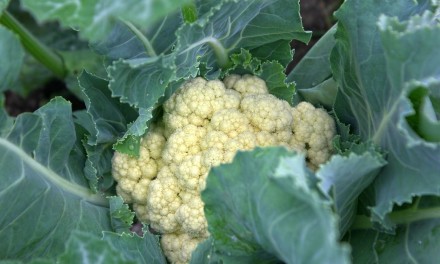Something in the cosmos or whatever mysterious force you believe in made my newsroom experience as a first-time data news editor easier than it will be for news editors of the future.
I’ve stumbled upon a team that was being built to form a data newsroom at Code for South Africa, but not all newsrooms are that lucky.
Here’s what I know about running a data-driven journalism newsroom: It’s time we throw away the handbook and learn to think in new ways and across platforms.
From staffing, to story-telling, to the day-to-day grind of putting a human face to data to bring great stories to life, traditional newsrooms will need better resources. They will also need to create new jobs that never existed – like data wranglers and newsroom developers – if they hope to properly tell data-driven stories in the digital age.
I’ve been in this job for five months now, and I learn something new about being a news editor in this environment, every day.
Here are five lessons I’ve learnt along the way.
- A data editor is a key member of the team, not a luxury. Our team was recently asked to host a breakaway session at a conference, talking about data journalism. As we prepared our speaking notes, I turned to our data editor, Daniela Lepiz, in a moment of embarrassing panic. What is data journalism? I asked, as an existential crisis unfolded in my mind.
Data, she said, is everywhere. Everyone is collecting data, all of the time, and it often lives online. It is the matric results, it is job losses, it is the prices of medicines, it is Edward Snowden. It is being shared and collected daily, sometimes for the greater good, sometimes not. But it is everywhere. And thanks to the digital revolution, for the first time, journalists can access and analyse it using free tools.
Journalists without the skills to analyse vast amounts of data are missing out on the way the world works. They don’t have all the facts, and so they do their readers a disservice.
There can be no data-driven newsroom without a Dani, who worked as a normal journalist before she was bitten by the data bug. We call her our data wrangler, and she is one. But really, she is a data editor who knows how to source data, clean it, analyse it, to find stories and then to tell them. She also has the gift of teaching her magic to others.
2. Enter the newsroom dev …
It sounds unusual to have a developer in a newsroom, because newsrooms are not quite exploiting digital platforms to their fullest extent, yet.
But our newsroom developer, the brilliant Lailah Ryklief help us building websites, with visualisations, graphic design, front-end coding and general tech support. Graphics are not something to be slapped on at the end of a story: they need to be carefully developed throughout the writing process. Lailah helps us with all-things technical, including mapping if it gets complicated, and custom-making story-telling devices or building micro-sites.
The other benefit of having a newsroom developer is that when we build something, be it a microsite or a tool, we have someone who can own it and maintain it. I’ve heard horror stories of newsrooms where incredible digital story-telling is lost years down the line because journalists do not have the skills to make sure nothing breaks.
- Don’t diss the humble bar graph
Visualisations are not always essential. Sometimes a graph or map can over-complicate a story, and doing a pretty visualisation just to show off is often totally useless for a reader. We use visualisations to make data-heavy stories accessible to readers, and often, simpler is better.
When I look at a visualisation that a journalist has made, whether or not I decide to use it is based on one simple test: did I have to look at it twice to understand the information? If I did, then it goes in the bin. It is our job as journalists to give readers stories which inform them quickly, easily, and – essential in this age of internet access via small screens – on their cellphones or tablets. If it doesn’t work on mobile, scrap it. Stop showing off. Think about what information readers need, and don’t diss the humble bar graph.
- At its best, data-driven storytelling is a team. You cannot know everything so, but you do need to you some things
Developers are not journalists, but they must know some things about journalism. Journalists cannot be expected to read or write code, but they must understand the needs of developers. Not all journalists can analyse data, but in order to report on stories involving data, they must be able to read an Excel sheet and have a basic understanding of what the rows and columns mean.
A data news editor cannot have all the skills required to tell data-driven stories, but she must know a bit of everything. I know a tiny little bit of some of these things, but I have learnt that I need to know more.
- Have fun!
Make mistakes. Find data, analyse it, and know enough to realise your numbers are wrong. Go back, make another pivot table, check your filters, call experts again, take a deep breath, and enjoy that process.
Mistakes are okay, because they are part of innovation. Make peace with the fact that they will happen, because that is the nature of doing something new.
So here is my final piece of advice: concentrate, flounder, learn, but most importantly, have fun.








